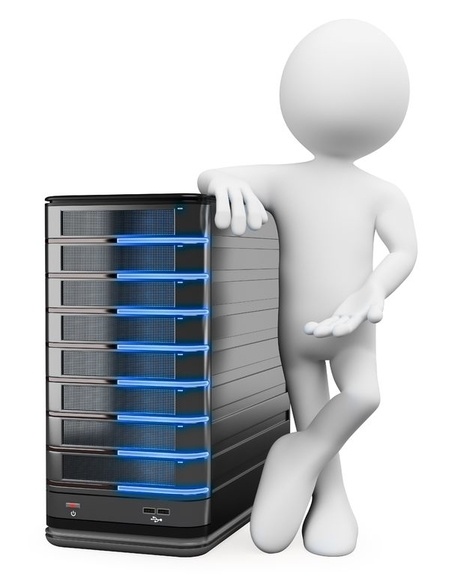
Welcome to part two of this series in which we are explaining the reasons why IT professionals must evaluate every dimension of a cabinet or rack before making a purchasing decision. Far too often choices are made after considering only one or two dimensions, and the repercussions of such carelessness can be costly.
Each Rack measurement is important in its own way. So each segment of this series focuses on one unique dimension of network racks and/or server cabinets. In part 1 we offered tips for calculating your real Internal Height (available racking space) requirements for a new rack or enclosure. In this segment, we address several often-overlooked considerations related to the External Height of racks that must become part of your evaluation process. Once again, helping you understand just how much Size Matters.
Part 2 - External Height
If you are shopping for a small rack or cabinet (i.e. 10U, 24U, 38U), then the exterior height may not be a dimension of great concern. However, if you need a full size rack (42U or higher), there are a number of potential roadblocks that must be considered before placing an order.
Let’s start with the most obvious. Before choosing a rack or cabinet, you need to determine whether or not it will physically fit in the room where it will reside. Keep in mind that a tight fit is not always the right fit. For example, do you know why purchasing an 84” tall rack enclosure (like a server cabinet) for use in a room with 7-ft ceilings is a bad idea?
For starters, an 84” tall server cabinet will just barely fit in a room with 7-ft ceilings. If that cabinet has vents or a fan tray built into the top panel (to draw out the heat which naturally rises to the top of an enclosure), then you are preventing the heat from escaping. Even a small gap of 1”-2” between the top of the cabinet and the ceiling reduces the effectiveness of a top-panel fan tray from adequately exhausting the heat from your cabinet.
By blocking the top of a server cabinet, you are allowing heat to build up inside your cabinet, which increases the danger to all sensitive equipment mounted near the top of the rails. Granted, most modern servers have enough built-in intelligence to power themselves off when they start to overheat. But can your business afford to have your servers shutting themselves off every hour because you purchased the wrong-size server cabinet?
Probably not. And if the too-tall server cabinet you purchase came with a solid front door (steel or glass), then your cabinet has become an Easy Bake Oven. Unfortunately your servers will be the only things getting cooked. So make sure the rack or cabinet you purchase will fit inside the intended room and have adequate space above it for heat to escape.
After verifying that your cabinet will fit into that one room, you need to measure the height of every pathway in your building it must travel through in order to reach its final destination. Start by checking the height of the entrance to your building. Then measure the height of every doorway and hallway it will pass through - being mindful of things hanging from the ceilings (i.e. sprinklers) - as well as elevators (if applicable) to ensure that nothing will obstruct its free passage.
When measuring the pathways in your building, be sure to add at least 4” to 6” to physical height of your rack to account for the shipping pallet and the protective packaging used to safeguard all cabinets and most racks in transit. If the extra height from the pallet or packaging presents a problem, remember that most full-size cabinets (and some 4-post racks) come with casters. So you can always remove the pallet to reduce the overall height by several inches, and then wheel it to its destination. But always use at least two people when pushing a cabinet on casters to prevent it from tipping over as you traverse floor obstacles like door jambs and elevator entrances.
If you determine that your building pathways are just too short to allow for a full-size cabinet to fit through them, you have two choices: First, you can purchase two shorter cabinets that collectively offer the total available rack space you desire. Your second option is to purchase an unassembled server cabinet - often called a knock-down or flat-pack cabinet - which can easily be carried through your facility and then assembled in the room where it will reside.
There is a third option that many IT professionals have attempted in the past, often with disastrous results. It is the delusion that, with enough guys, they can carry a full-size cabinet horizontally through their facility to get it where it needs to be, thereby avoiding the low ceilings/doorways. Full-size server cabinets can weigh well over 400-lbs and were definitely not designed to be carried easily...or at all. So before even considering such a foolish stunt, please remember the underlying theme of this series: Size Matters.
Tech Tip #2 - External Height
The most important considerations regarding the External Height of the rack or cabinet you plan to purchase are to make sure:
1. The rack will fit in the room where you plan to store it, with ample space between its top and the ceiling for ventilation / air-flow.
2. The rack will fit through the entrance to your facility, and through every pathway it must travel to reach the final destination (including doorways, hallways, and freight elevators).
3. If the pathways in your facility are too short to allow for a full-size cabinet to pass through them, consider purchasing an unassembled flat-pack / knock-down cabinet instead of a pre-assembled one.
Check back tomorrow for our third segment of this series that focuses on the Internal Width (Rail Width) of rack enclosures and cabinets, and the considerations you must weigh before choosing one.
If you need help installing a new rack or cabinet in your facility, or mounting all of your equipment in it, then contact Tech Service Today for assistance. We can deliver a skilled Technician to your facility whenever you need help - anywhere in North America
5
Need help installing, troubleshooting, testing, documenting, or replacing your network cabling? Call Tech Service Today for on-site technical services anywhere in North America - often in 4-hours or less.
Just call (800) 973-2022 (option 1), or Email us at Service@TechServiceToday.com

